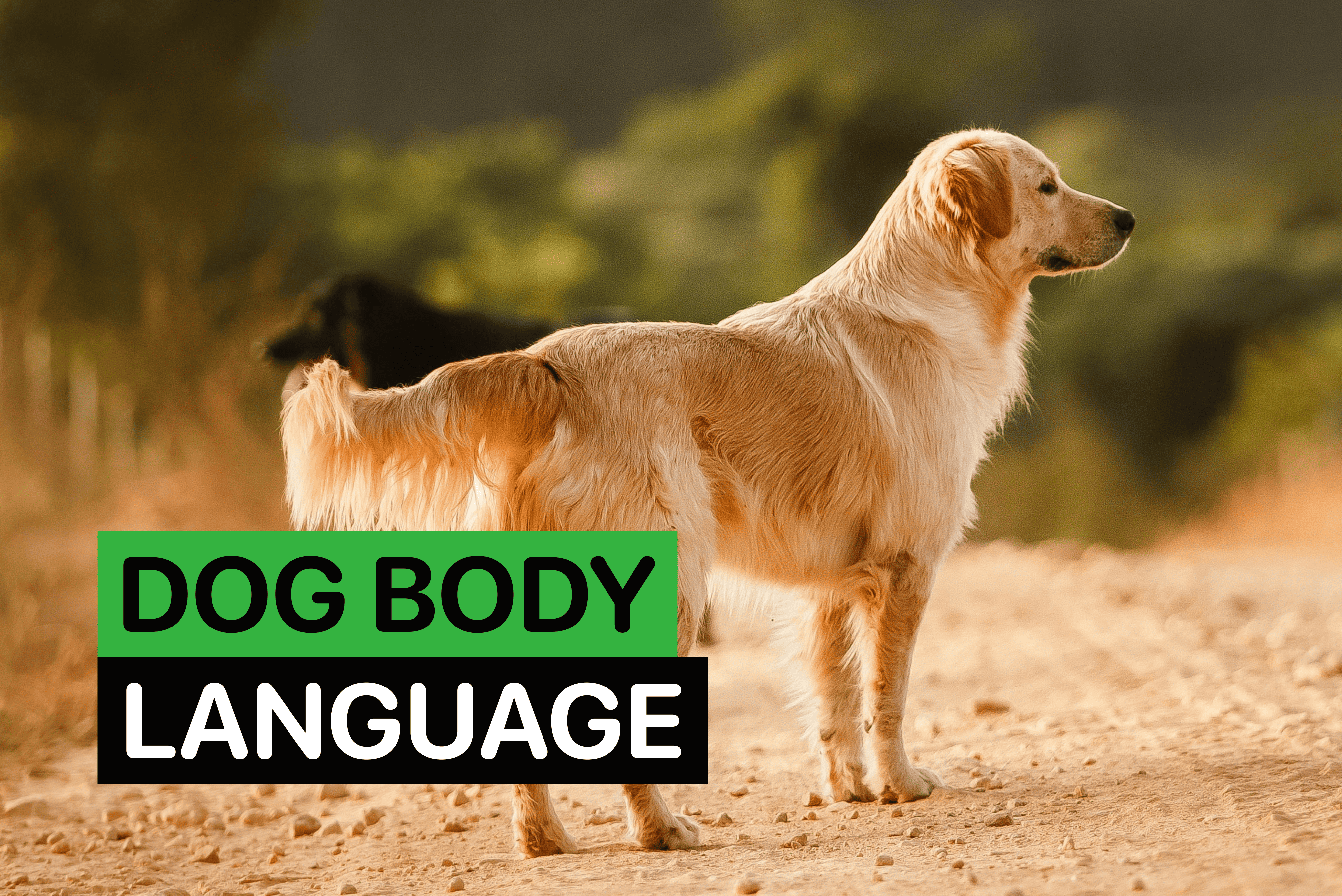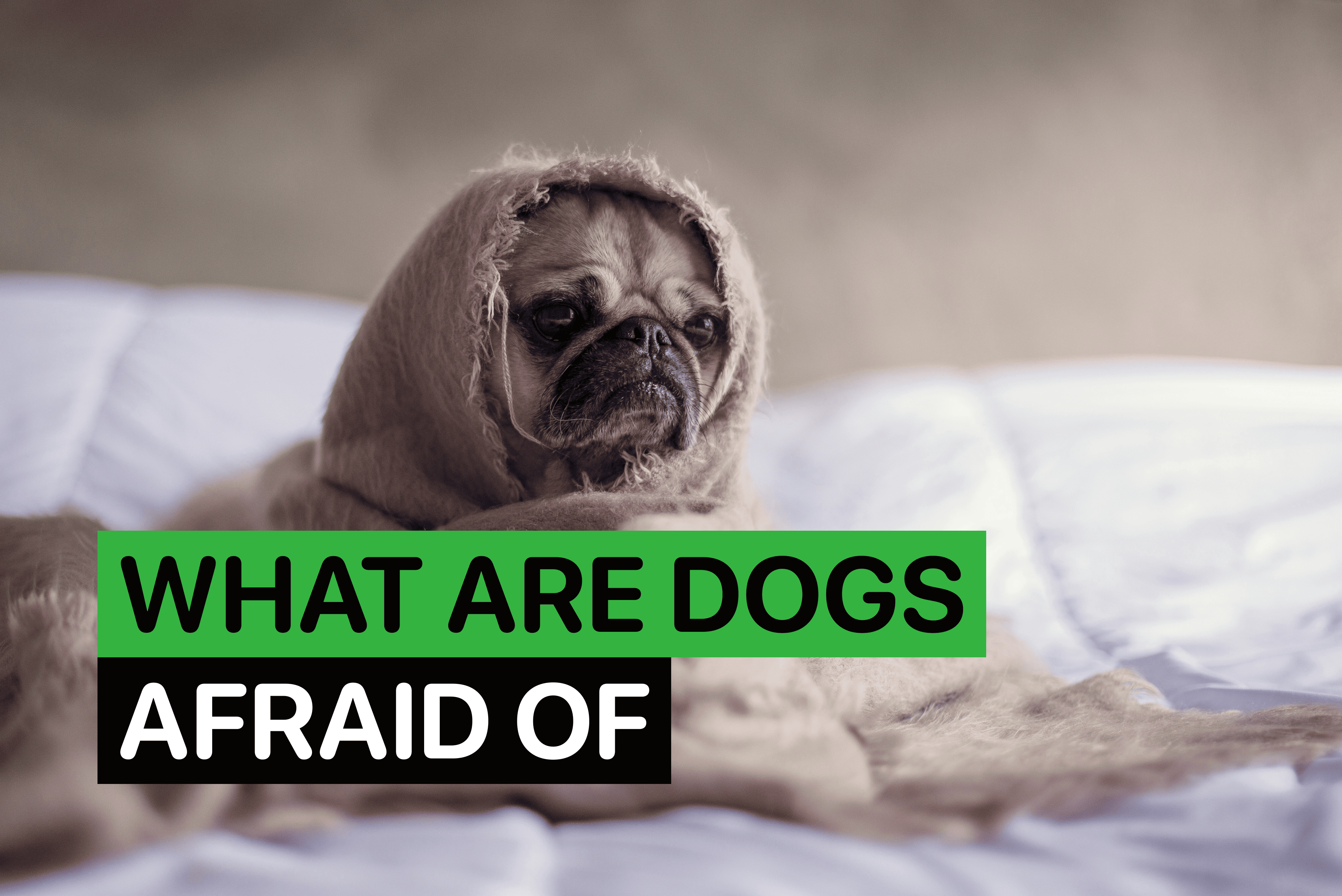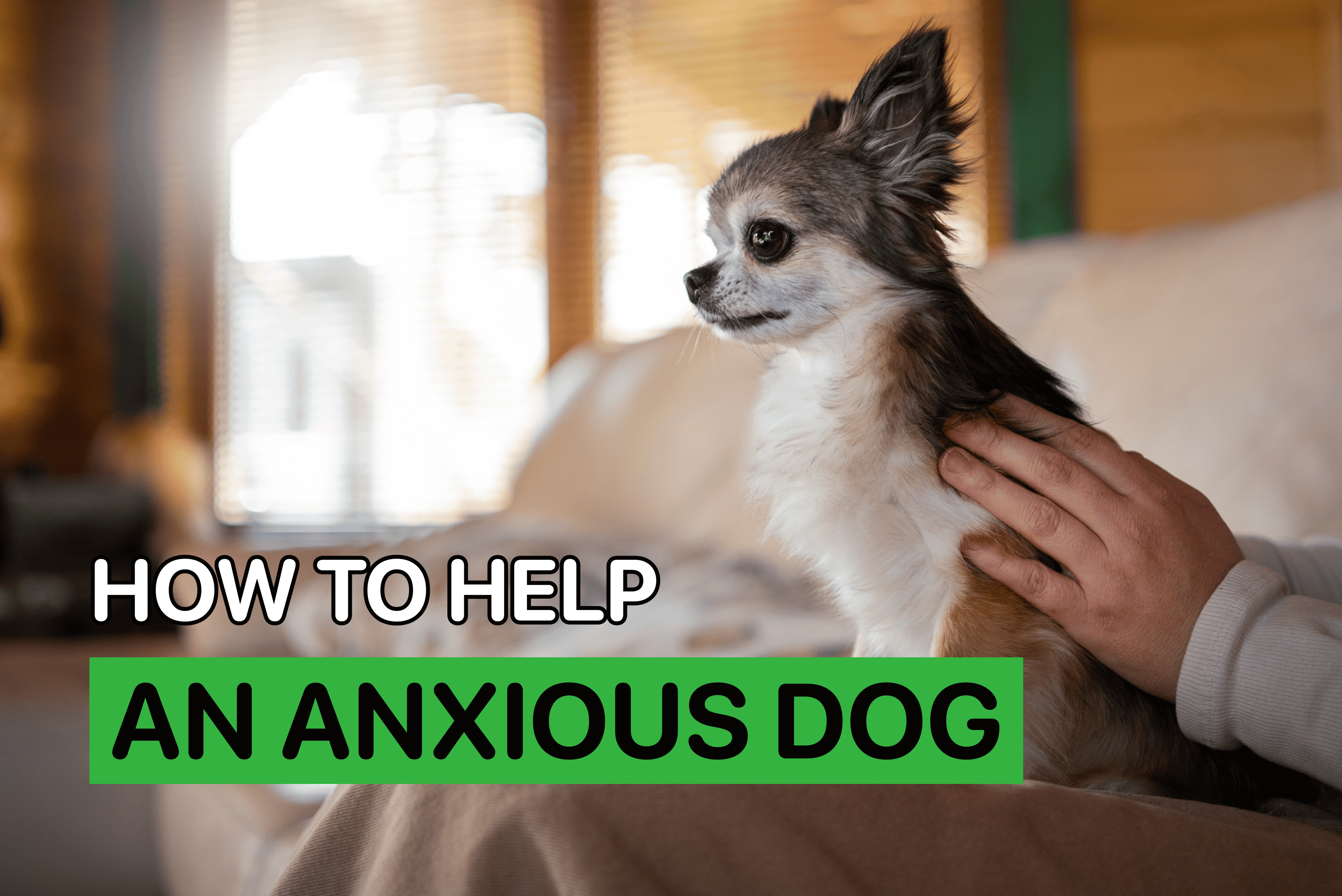Identifying the Critical Signs of Stress in a Dog

By
Woofz Team Updated on |Reviewed by Annie-Mae Levy
In the intricate tapestry of emotions, dogs, much like their human counterparts, experience stress in response to certain situations. While occasional stress is normal for humans and dogs, understanding the critical signs of stress in a dog and distinguishing between fleeting stress and prolonged anxiety is crucial.
This guide is like a roadmap to understanding what your pup might be trying to tell you. We'll uncover the subtle signs, talk about things that might stress them out, and, most importantly, share tips on being their source of comfort.
It's a journey of decoding doggy language, making their world stress-free and happy.
Common Signs of Canine Stress Every Dog Owner Must Know
Dogs rely on body language to communicate distress, self-soothe, and diffuse conflicts. Understanding these signals is vital for assisting your pet in coping with fears.

As a pet parent, you should pay close attention to whether your dog exhibits these stress signs when approached by you or others or if it's a consistent reaction to the presence of a specific object, like a car.
This way, you’ll understand better the core problem of a dog's stress, so you can help your dog deal with it if you can’t avoid it (e.g., by desensitizing and counterconditioning to the stimuli).
Subtle Stress Signals
Turning Their Head Away
Signals discomfort and a need for "space" during actions like hugging or picking them up.

Turning Away
Indicates distress when milder signals don't bring the desired result, often seen after unexpected experiences.
Dog Pacing
This is a common stress sign in dogs, characterized by repetitive and restless movement. If your dog is pacing excessively, it may indicate unease or discomfort.

Lip Licking
A calming signal, especially when tired of training, communicates a need for space. This is usually accompanied by lifting one paw.
Whale Eye
"Whale eye" refers to a stress sign in dogs where the whites of their eyes become visible, resembling the eye of a whale. This typically occurs when a dog turns its head away but keeps its eyes fixed on a person or object. It signals discomfort or anxiety, indicating that the dog is feeling uneasy or stressed in the given situation.

Inviting-to-Play Position
Accompanied by calming signals like licking, tail wagging, or lowering the head, this suggests a desire to ease tension in their surroundings.
Ears Back
This calming signal indicates discomfort, fear, or anxiety in response to a particular situation or stimulus. Stressed dogs may retract their ears as a way of expressing submission or a desire to avoid conflict.

Dog Yawning
Frequent yawning, not just after waking up, can indicate stress and a desire for an unpleasant situation to stop.
Weight Shifted Backward
This dog's behavior is often accompanied by other stress indicators like avoiding direct eye contact or attempting to create distance. Shifting weight backward is a defensive mechanism, signaling the dog's discomfort or unease.

Tail Wagging
If your furry pal wags are stiff and with a lack of much side-to-side movement, it means they’re feeling uncomfortable. Usually, this type of tail wagging will be predominantly to their left.
Obvious Dog Stress Signs
- Whining or Barking
Dogs bark for many reasons, but generally speaking, a high-pitched bark indicates distress or frustration. A very low continuous bark indicates a dog is feeling that something of theirs is under threat.
- Growling
A low rumbling growl from a dog is a clear sign they’re unhappy and want more space. If your dog is constantly growling at you/other animals, then it’s time to see a dog trainer.

- Backing Away
Dogs may back away from a person or potentially dangerous situations whenever they feel stressed. This behavior signals a desire for space and a need to avoid potential stressors.
- Tail Tucked Between Legs
When a dog tucks their tail between their legs, it's a classic sign of anxiety or fear. It reflects a submissive posture as your dog is trying to make themselves appear smaller.
- Loss of Appetite
A sudden reluctance to eat can indicate stress in dogs. Changes in their environment or emotional state may lead to a decreased interest in food.

- Lowered Body Posture
A lowered center of gravity is a common behavior seen in uncertain dogs attempting to project a non-threatening demeanor.
- Trembling or Shivering
When a dog trembles or shivers in the absence of cold or excitement, it often indicates stress. This physical response reflects heightened anxiety or nervousness.
- Diarrhea
Stress can impact a dog's digestive system, leading to diarrhoea or more frequent bowel movements. Changes in routine or anxiety-inducing situations may trigger this response. Persistent signs of a bad stomach mean it's time to see your vet, as it may be colitis.
Why Do Dogs Get Stressed
Dogs may become stressed for a bunch of reasons, just like us. Changes in routine, sudden loud noises, unfamiliar environments, the presence of new people or animals, and even boredom can induce stress in dogs.
On top of this, separation anxiety, medical issues, and even certain grooming procedures may contribute to their stress levels as well. So, if you’ve already noticed some stress signals in your pooch and have determined the reason, it’s time to resolve the problem.
Ways to Help Your Dog Cope with Stress
Prevention Is Better Than Cure
First, let’s talk about how you can prevent your dog's anxiety and make sure your dog has enough emotional stability and confidence not to be susceptible to stress factors:
-
Build a Consistent Routine: Make sure your dog has a consistent schedule for feeding, walks, and playtime, as it provides a sense of security.
-
Beat Boredom: There are various ways you can provide mental enrichment for your dog, from interactive toys to fun games you can enjoy together!
-
Provide a Safe Space: Create a safe and comfortable space where your dog can retreat when feeling anxious. This can be a crate or a designated area in your home.
-
Exercise Regularly: Regular physical activity helps release excess energy and promotes mental wellbeing. Both you and your furry friend can benefit from it. It's a great idea to take your furry friend for a walk to a dog park. This reduces the likelihood of stress. Our Woofz app can help you in finding fun activities.
-
Quality Food: Ensure your dog's diet is nutritionally balanced to support overall health, as physical wellbeing contributes to mental wellbeing.
-
Create a Calm Environment for Both of You: Dogs can easily pick up on your mood, so if you’re under constant stress or fighting with other family members, your dog will likely feel similarly.
-
Regular Vet Checkups: Regular veterinary checkups can help identify and address potential health issues early, contributing to your dog's overall wellbeing and confidence.

- Desensitize Your Dog to Various Stimuli:
Gradually expose your pet to loud noises, new experiences, and environments to prevent overwhelming your dog. Make sure your dog always has positive associations (by giving them their favorite treats and lots of love) with them to help reduce anxiety.
Let’s see how you can do it in this example of desensitization to loud noise:
Tip: If at any point your dog seems more reluctant to take food or focus on you, go back a step and reduce the volume or proximity to the trigger.
-
Prepare a generous supply of treats.
-
Start playing an audio recording of the noise you want to practice with at the lowest volume, immediately giving treats to your dog.
-
If the dog exhibits reactive behaviors like barking or growling, move the object producing the sound further away to decrease volume.
-
As your dog becomes comfortable (no attempts to flee or noticeable reactions), gradually raise the volume while continuing to give treats.
-
Repeat the process with every sound/noise your dog might be afraid of/not used to until they’re okay with it, even with the highest volume.
Deal with Actual Stressful Situation
If stress has already happened (e.g., New Year fireworks or a thunderstorm) and you didn’t have time or the opportunity to prepare for it, here’s what you can do:
- Support your pet by staying calm, gentle, and attentive
Speak to and pet your pooch with a soothing tone, keeping an eye on their preferences that might change in stressful situations. It's crucial not to get anxious yourself; maintain a calm voice and slow stroking. Provide things to chew on for mental stimulation.

- Water, food, and toilet
Ensure your pet has access to both food and water, with a higher priority on water. Create a comfortable indoor toilet area using materials like earth from houseplants, pieces of clothing, or paper if going outside isn’t possible. Be patient as your dog adapts to the situation.
- Encourage curiosity
It can lower stress levels and create a healthy distraction. If your dog is scared, your deep breaths can help them cope.

- Just be there
Simply being close to your pet without any training or commands is essential. Stress can cause mental exhaustion, so ensure your dog gets enough sleep and rest. Consider using a warm blanket or a warm water bottle to help your dog relax and fall asleep faster.
- Avoid leaving your pet alone
Especially confined in a crate or another place. Refrain from making loud noises or demanding too much from your pooch. Instead, focus on being present and providing companionship.

- Breathing next to a scared dog
Your deep breaths can help your fluffy friend cope with stress! So, hug your dog and take deep inhalations and exhalations, and you'll likely notice a positive change in their breathing and overall demeanor.
What Can I Give My Dog to Relieve Stress?
Two categories of medications offer relief for anxious pets: general anxiety medications and specific anxiety medications.
- Generalized Anxiety Medications
Examples include Fluoxetine and Clomicalm. Consider this treatment if your pet's low tolerance to triggers hinders training, causing excessive stress. A behaviorist can assess if this is necessary, especially in cases of severe separation anxiety, fearfulness of the outdoors, or extreme anxiety. These medications work gradually over the long term, helping your pet adjust to stress. Combining them with a suitable training plan is advisable, and in many cases, you can eventually taper off usage.
- Specific Anxiety Medications
One example is Trazodone. If your dog experiences context-specific, predictable stress – such as fear of fireworks – a vet may recommend this medication. It can be administered on occasions like any night involving fireworks or New Year's Eve to alleviate stress. If your dog encounters intense stress around specific, non-daily events, discussing this option with a vet is worthwhile.

Besides, if you’re a fan of aromatherapy, you can try diluted lavender essential oil to help soothe your dog’s nervous system and even encourage them to sleep more. You can find out more about dog aromatherapy and other relaxation techniques in the Wellbeing section in the Woofz app.
In Conclusion
In summary, detecting critical signs of stress in a dog is crucial for a healthy bond. Proactively preventing stress, creating a safe environment, and using positive reinforcement contribute to your dog's wellbeing.
Remember, human stress levels differ from your pet's stress level. That's why you should stay attentive to your pet's needs and seek professional advice if distress persists. A happy, confident dog enhances the joy of your companionship.


